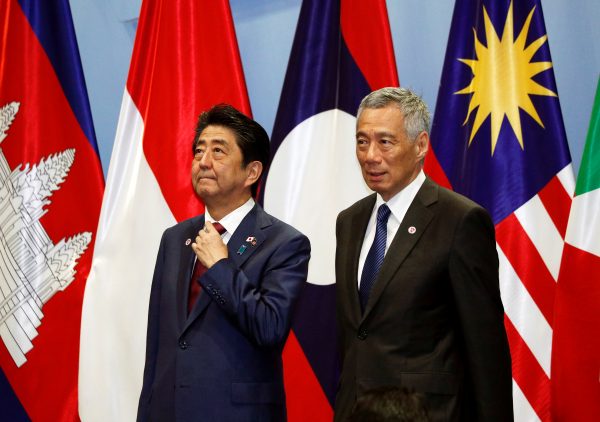Per capita income in the region’s richest country, Singapore, is over six times higher than in the poorest, Myanmar. ASEAN member states regard the vast income gap as a ‘matter of urgency’. To enable equitable development, the AEC requires that older ASEAN member assist newer members (known as the CLMV countries: Cambodia, Laos, Myanmar and Vietnam) in their efforts to enhance their economic capacity. Since 2000, when ASEAN leaders adopted the Initiative for ASEAN integration, the older six member have been supporting CLMV countries in five key areas: food and agriculture, international trade, small and medium-sized enterprises, education, and health and wellbeing.
According to a recent study, the CLMV countries are divided by a two-layer economic structure: Cambodia and Vietnam have been successful in bringing down the income gap with their older and richer ASEAN peers while Laos and Myanmar have lagged behind.
Outside of Southeast Asia, the Japanese government is showing its awareness of the importance of enabling equitable development in ASEAN. In 2011, it announced the ASEAN–Japan plan of action. Under this initiative, Japan provides foreign aid to CLMV countries in order to narrow the income gap among ASEAN members. In particular, Japan is focusing on six areas: supporting human resource development, providing technical cooperation, organising seminars, offering training programs, promoting harmonious labour relations and giving assistance to local governments.
Japan is giving two types of foreign aid as economic assistance to CLMV countries. There are bilateral grants that recipient countries have no obligation to repay and bilateral loans that require repayment with an interest rate. Myanmar is the largest recipient of Japanese bilateral grants among CLMV countries. In 2017, Japan unveiled thirty new grant projects to CLMV countries, with half to be implemented in Myanmar.
The major projects to receive Japan’s aid funds are related to emergency food assistance and the expansion of broadcasting equipment, each receiving 2.2 billion yen (US$19.8 million). Cambodia was another key grant recipient of Japanese aid (3.2 billion yen or US$28.8 million) in 2017, including funds for the expansion of water supply systems as well as mine clearance and landmine victim assistance.
CLMV countries are also among the favoured destinations for Japan’s bilateral loans. In 2017, the Japanese government pledged bilateral loans exceeding 20 billion yen (US$180.1 million) to 24 megaprojects all over the world. The main recipients were CLMV countries, where 6 out of the 24 megaprojects were to be implemented. In total, Japan promised bilateral loans to 12 projects in CLMV countries, including the 6 megaprojects.
Myanmar, where seven projects are to be implemented, is the largest recipient of Japan’s bilateral loans among CLMV countries. These projects include constructing the Bago River bridge (31 billion yen or US$279.2 million), improving the Yangon–Mandalay railway (25 billion yen or US$225.2 million) and improving water supply. Japan also promised to provide 90.1 billion yen (US$811.7 million) to Vietnam for another megaproject, the construction of the Ho Chi Minh City Metro.
But Japan is not the only major source of economic assistance to CLMV countries. Under the Belt and Road Initiative, the Chinese government provides a vast amount of aid for infrastructure projects in Laos, where national income amounts to only US$12 billion. China has offered it US$6 billion to construct a 418-kilometre railway. Despite the potential for tangible and enormous economic impact, concerns have been voiced that this massive provision of aid might have a hidden agenda. These criticisms stem from conditions for the aid provision, with materials for the railway and construction workers to be imported from China.
CLMV countries need vast amounts of funds for the rapid development of their physical infrastructure and human capital necessary to catch up with their richer ASEAN peers. The question is whether CLMV countries will be more inclined to seek financial assistance from Japan or China. Foreign aid programs provided by the Japanese and the Chinese governments have their own strengths and weaknesses. Undoubtedly, the aid provided by China would enable rapid economic transformation on a colossal scale.
Japan is not able to match the scale of China’s foreign aid, due to its economic woes, financial constraints and ageing population. But the quality of Japanese aid assistance programs — they have been continuously refined over more than sixty years — would be a valuable complementary economic resource for achieving equitable development in the region.
Fumitaka Furuoka is Associate Professor at the Asia-Europe Institute, University of Malaya.


Is it 6 times or 60 times higher than Myanmar?